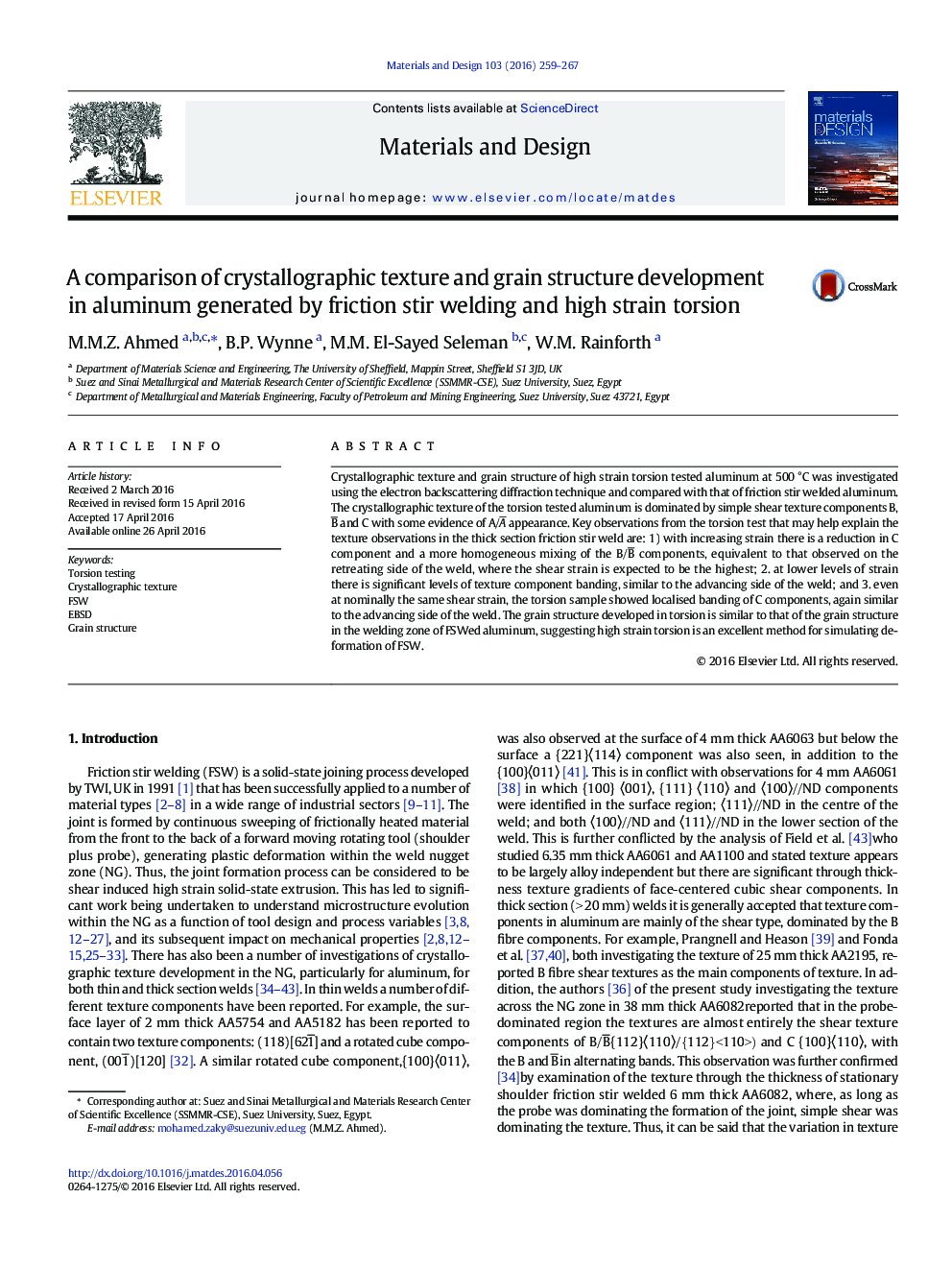| Article ID | Journal | Published Year | Pages | File Type |
|---|---|---|---|---|
| 828029 | Materials & Design | 2016 | 9 Pages |
•Crystallographic texture of high strain torsion tested and friction stir welded aluminum are compared.•The texture is dominated by simple shear texture components B, B̅ and C in both cases.•Texture components of the torsion tested are very sharp relative the FSWed aluminum.•The grain structure developed is typical of the grain structure in the NG zone of FSWed aluminum.•High strain torsion is an excellent method for simulating deformation of FSW.
Crystallographic texture and grain structure of high strain torsion tested aluminum at 500 °C was investigated using the electron backscattering diffraction technique and compared with that of friction stir welded aluminum. The crystallographic texture of the torsion tested aluminum is dominated by simple shear texture components B, B̅ and C with some evidence of A/A̅ appearance. Key observations from the torsion test that may help explain the texture observations in the thick section friction stir weld are: 1) with increasing strain there is a reduction in C component and a more homogeneous mixing of the B/B̅ components, equivalent to that observed on the retreating side of the weld, where the shear strain is expected to be the highest; 2. at lower levels of strain there is significant levels of texture component banding, similar to the advancing side of the weld; and 3. even at nominally the same shear strain, the torsion sample showed localised banding of C components, again similar to the advancing side of the weld. The grain structure developed in torsion is similar to that of the grain structure in the welding zone of FSWed aluminum, suggesting high strain torsion is an excellent method for simulating deformation of FSW.
Graphical abstractFigure optionsDownload full-size imageDownload as PowerPoint slide
